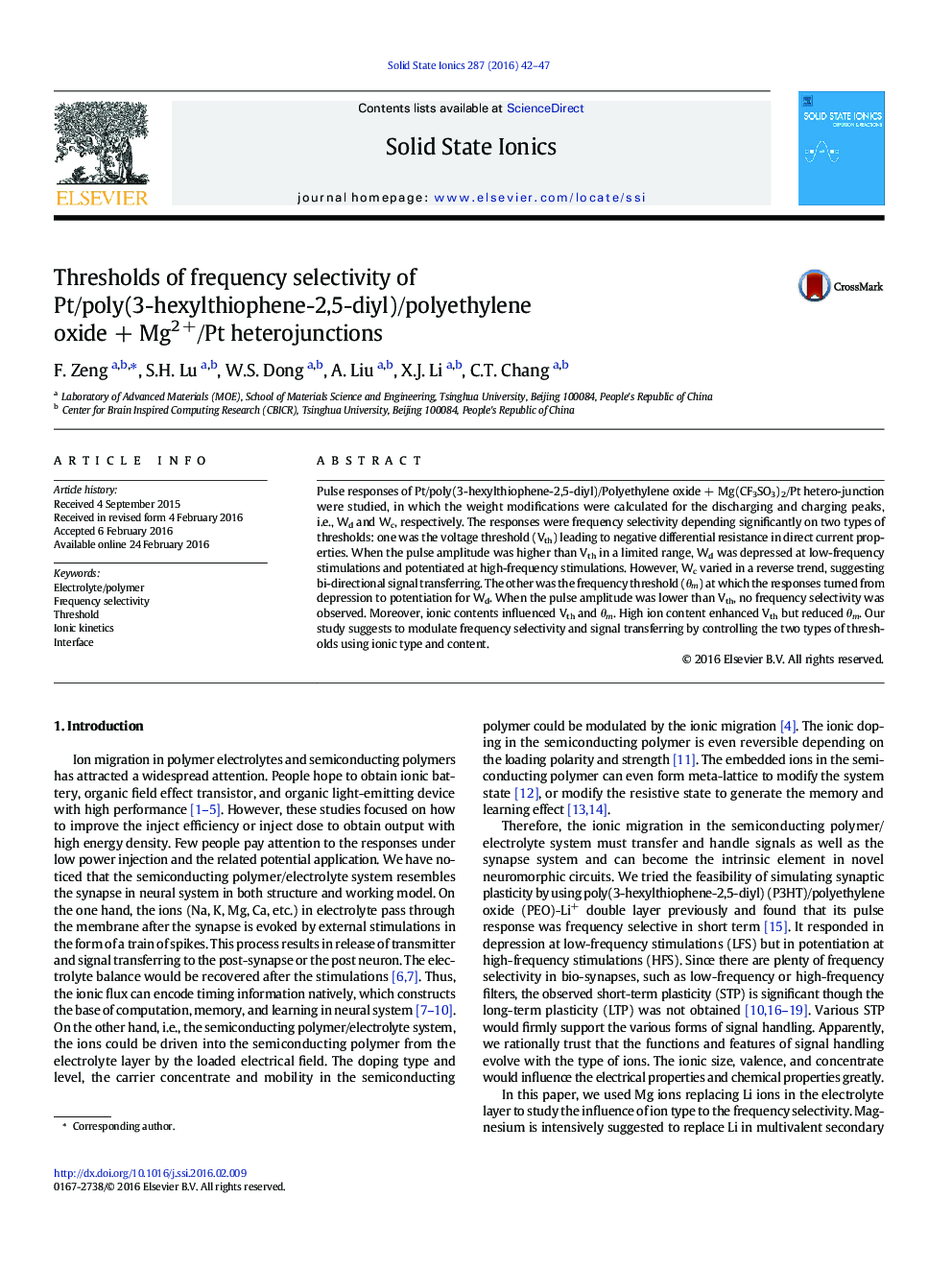| Article ID | Journal | Published Year | Pages | File Type |
|---|---|---|---|---|
| 1293337 | Solid State Ionics | 2016 | 6 Pages |
•Pt/P3HT/PEO + Mg2 +/Pt hetero-junction responded to pulse frequency selectively.•Frequency selectivity appeared when pulse voltage is higher than that of NDR.•Frequency threshold controls transition between depression and potentiation response.•Ionic content manipulates the positions of both voltage and frequency thresholds.•Bi-directional signal transferring is possible for our device.
Pulse responses of Pt/poly(3-hexylthiophene-2,5-diyl)/Polyethylene oxide + Mg(CF3SO3)2/Pt hetero-junction were studied, in which the weight modifications were calculated for the discharging and charging peaks, i.e., Wd and Wc, respectively. The responses were frequency selectivity depending significantly on two types of thresholds: one was the voltage threshold (Vth) leading to negative differential resistance in direct current properties. When the pulse amplitude was higher than Vth in a limited range, Wd was depressed at low-frequency stimulations and potentiated at high-frequency stimulations. However, Wc varied in a reverse trend, suggesting bi-directional signal transferring. The other was the frequency threshold (θm) at which the responses turned from depression to potentiation for Wd. When the pulse amplitude was lower than Vth, no frequency selectivity was observed. Moreover, ionic contents influenced Vth and θm. High ion content enhanced Vth but reduced θm. Our study suggests to modulate frequency selectivity and signal transferring by controlling the two types of thresholds using ionic type and content.
